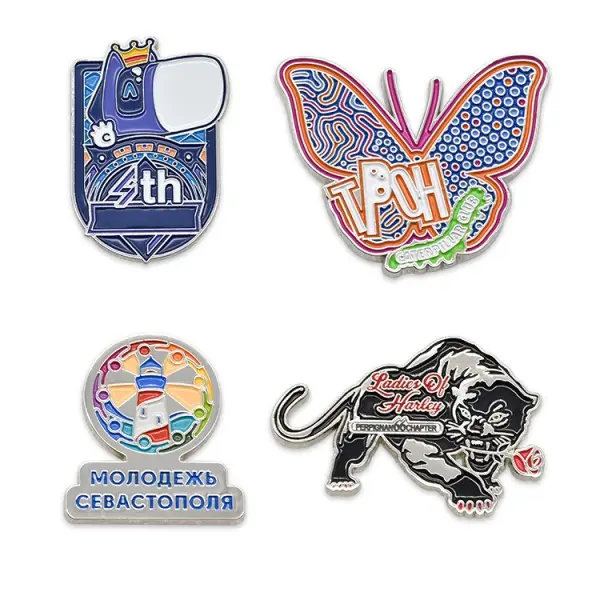The evolution of the production process of pins is closely related to the development of material technology and manufacturing technology, and has roughly gone through the following stages:
Early handmade stage
Simple forging period: In the early days of metal working technology, pins may be made of simple metal strips that are forged and bent by hand. People use simple tools such as stones to pound and bend metal to make basic pin shapes, which are used to hold clothing and so on. The pin craft of this period is simple, the shape is rough and irregular, and there is not much decoration and fine processing.
Progress of the Bronze Age: Into the Bronze Age, with the development of bronze smelting technology, the production material of pins gradually changed from ordinary metal to bronze. The hardness and toughness of bronze is better than that of earlier metals, which allows the production of pins to be more elaborate. Artisans can make pins with simple patterns and shapes through the casting process, such as the head of some pins will be cast into a simple geometric shape or animal shape, increasing the decorative nature of the pin.

The appearance of iron pins: The use of iron marked another leap in metalworking technology. The strength of iron is higher and the cost is relatively low, making the production of pins more popular. During this period, the forging process was more mature, and craftsmen could make iron into more complex and fine shapes by heating, hammering, and so on. In addition to the practical function, the decoration of the pin has also been further enhanced, and more complex carving and setting processes have appeared, such as inlaying gems, shells, etc., on the pin to increase its beauty and value.
Initial stage of industrialization
The beginning of machine manufacturing: After the Industrial Revolution began in the 18th century, the making of pins gradually shifted from manual to machine manufacturing. The original machine made pins mainly through simple stamping and bending processes, using mechanical power instead of manual operation, improving production efficiency and product consistency. The pin shape and size of this period were more standardized and unified, which could meet the needs of large-scale production.
Material and process innovation: With the development of industrial technology, new materials and surface treatment processes are applied to pin production. Steel has become the main production material, and through electroplating and other processes, a layer of nickel, chromium and other metals are plated on the surface of the pin, which not only improves the anti-rust performance of the pin, but also makes the surface more smooth and bright, increasing the beauty and durability of the product.
Modern industrialization stage
Automated production and precision manufacturing: Since the 20th century, with the continuous progress of automation technology and precision machining technology, the production process of pins has entered a stage of high automation and precision. Using advanced automated production lines, a series of processes from wire feeding, cutting, bending, molding to surface treatment can be automatically completed by the machine, greatly improving production efficiency, product quality is more stable. At the same time, the use of precision mold and stamping technology, you can produce a variety of complex shapes and high-precision pins to meet the needs of different markets and consumers.
Diversification and personalized customization: Modern pin making not only focuses on functionality and production efficiency, but also pays more attention to the diversification and individuation of products. Through computer-aided design (CAD) and computer-aided manufacturing (CAM) technology, designers can quickly design a variety of unique pin shapes and patterns according to customer needs, and through advanced manufacturing equipment for precise manufacturing. In addition, laser engraving, color printing and other technologies can also be used to add a variety of exquisite text, patterns and colors on the surface of the pin to achieve personalized customization, so that the pin is not only a practical item, but also a decoration with artistic value and cultural connotation.
Post time: Mar-01-2025
